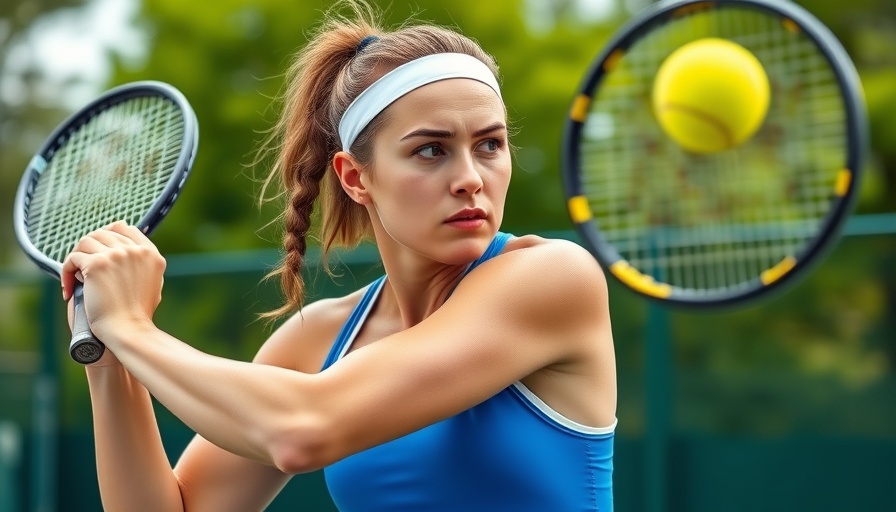
The Art of Moving Backwards in Tennis
In the dynamic world of tennis, the ability to efficiently move backwards is as crucial as it is challenging. When you're at the net and a lob is hurled over your head, your reflexes and foot coordination are immediately put to the test. Understanding how to backpedal effectively can be the difference between a spectacular smash and a missed opportunity. This drill not only emphasizes footwork but also instills a sense of balance and control, pivotal for any aspiring player.
In 'How to Smash while Moving Back,' the video examines key strategies for effective backward movement in tennis, sparking further exploration of its nuances.
Understanding the Challenges of Backward Movement
Many players instinctively lean back when they need to move backwards. However, this positioning can lead to instability and, in some cases, falls. As the ball sails behind you, your hips remain forward while your shoulders lean backward, creating a precarious balance. Novice players often struggle as they try to track the ball while moving backward, leading to missteps and falls. This is where mastering different movement techniques becomes vital.
Cross Stepping: The Game-Changer
The video tutorial skillfully introduced the cross-step as a swift and efficient method for moving backward. Unlike traditional techniques that rely on simple backward movement, the cross-step allows players to maintain stability while keeping their focus on the ball. Imagine running backward while watching the ball; this movement mirrors a sort of dance, demanding both agility and awareness. By utilizing this cross-step technique, players can quickly adjust their positioning to respond effectively to a lob.
When to Use Side Steps vs. Cross Steps
Not every situation on the court requires speed. If the lob is not far and you still need to stay agile, side steps offer a solid approach. This method works well when adjustments are minor and you don't need to rush. However, there are instances where the urgency to return a high lob demands a faster reaction. Players must learn to assess the distance the ball has traveled and respond accordingly with the appropriate footwork strategy. Mastering both techniques provides more options in critical moments.
Acknowledge Your Limits: Knowing When to Let the Ball Bounce
Experienced players understand that sometimes it’s better to let the ball bounce than attempt a risky overhead smash. If the ball is traveling too quickly, it may be impossible to execute a clean hit while moving backward. Training yourself to recognize these situations not only minimizes errors but also optimizes your ability to make strong groundstrokes from a more stable position. Each player’s experience will shape their understanding of when to attempt a hit and when to strategically let the ball come to them.
The Importance of Drills in Developing Skills
To develop these skills, replicating game-like situations during practice is essential. Enhanced footwork and stability drills can be incorporated into training sessions. By regularly practicing the mentioned techniques, players can cultivate reflexive movements that will feel second nature during matches. Consistent training also encourages confidence, enabling players to tackle lobs with assurance and precision.
Conclusion: Mastering Movement for Greater Success
Being adept at moving backwards in tennis isn't just about technical ability; it’s a crucial and often underestimated skill that can give players an edge over their opponents. As demonstrated in the video “How to Smash while Moving Back,” mastering movement techniques is paramount for executing successful shots under pressure. By honing these abilities and understanding the science behind footwork, one can significantly improve gameplay and enhance overall performance on the court.
As players and fans continue to dissect the nuances of effective movement in tennis, there's an intertwined appreciation for how athleticism and strategy can redefine match outcomes. It’s an evolution that deserves exploration—not just for tennis enthusiasts but for everyone interested in the intricate dance of sport.
 Add Row
Add Row  Add
Add 




Write A Comment